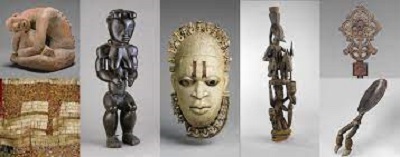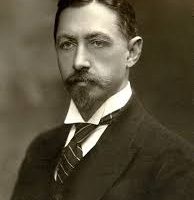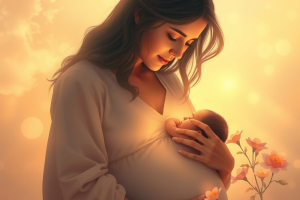
BY MULUGETA GUDETA
We can perhaps start by defining Western and African art. In Western tradition, the elements of artistic creativity are considered “to be color, tone, line, shape, space, and texture. In general, we tend to agree that there are seven formal elements of art.” On the other hand, the elements of African art are seven in number. They are, “Resemblance to a human being, Luminosity: Self-composure, Youthfulness, Clarity of form and detail, complexity of composition, balance and symmetry, smoothness of finish.” A comparison of the two elements would suggest that African art is more sophisticated, more complex and more varied.
The element of variety is most evident in African art if we consider the range and styles of African art like music and dance by looking at a single country and a single region. In Ethiopia alone, where there are more than eighty ethnic groups, we can observe a whole lot of variety in the artistic traditions of each ethnic group and within the ethnic group each region and sub-region. However, it is no mystery that African art with such range and diversity had long remained stagnant as far as modernizing it is concerned. However, the answer to this alleged stagnation may for instance be the long period of colonialism that has stifled local African initiatives and imposed its own artistic styles and conceptions as well objectives.
It is therefore obvious that that contemporary African art is heavily influenced by Western, i.e. Anglophone or Francophone, art as a legacy of centuries of colonialism. It is also no secret that contemporary African art continues to bear the imprints of modern Western forms for various reasons. One is economic. In order for modern African musicians to gain recognition and economic benefits, they have to follow Western styles that are popular wither in Europe or America. Traditional African art including music, has not completely divorced itself from the Western tradition although Africa has a rich and varied artistic traditions.
A definition of traditional African music for instance takes into consideration “the vastness of the African continent, its music is diverse, with regions and nations having many distinct musical traditions. African music includes the genres amapiano, Jùjú, Fuji, Afrobeat, Highlife, Makossa, Kizomba, and others.” Like African traditional music, African popular music (also styled Afropop, Afro-pop or Afro pop), like African traditional music, is vast and varied.”
The line between what is African and contemporary art is sometimes blurred.
“Most contemporary genres of African popular music build on cross-pollination with western popular music. Many genres of popular music like blues, jazz, afrobeats, salsa, zouk, and rumba derive to varying degrees on musical traditions from Africa, taken to the Americas by enslaved Africans. These rhythms and sounds have subsequently been adapted by newer genres like rock, and rhythm and blues. Likewise, African popular music has adopted elements, particularly the musical instruments and recording studio techniques of western music. The term does not refer to a specific style or sound but is used as a general term for African popular music.”
The same can be said about African visual arts like painting or sculpting. African visual art may be older than its modern Western counterpart but it is highly influenced by Western arts. His is not however to say that African art has not or does not influence its Western counterpart. There are some prominent examples of how the West used or uses African art without claiming its sources. Pablo Picasso is, for instance, one among many Western artists who have borrowed heavily from African art like African masks and sculptures.
In the case of the Spanish-French painter we mention here, he has what is known as “the African Period” in his long journey to artistic creativity. “Picasso’s African Period, which lasted from 1906 to 1909, was the period when Pablo Picasso painted in a style which was strongly influenced by African sculpture, particularly traditional African masks and art of ancient Egypt…”
Why and how Picasso adopted African art to promote, populate or enrich his own creativity is an interesting question. One opinion says that, “The mistreatment of Africans in the Belgian Congo was exposed in Joseph Conrad’s popular book Heart of Darkness. It was perhaps due to this climate that Picasso and other artists began looking towards African art for inspiration” It is known that Picasso had a left-leaning political opinion on the question of colonialism. He was at one point in his life a member of the communist party which he rejected later on and withdrew from the organization.
However, the aesthetic explanation might be more convincing than the political one. Although Picasso did not acknowledge it, he owes a great deal from African art to develop his own style known as Cubism. “The artists who were influenced by African art form a constellation of Modern-art history: Picasso, Paul Klee, Basquiat, Bacon, Matisse,’ says specialist Susan Kloman, introducing Evolution of Form: African & Oceanic Art at the Genesis of Modernism.
Another opinion holds the opposite view that “Picasso saw in African figuration a religious depth and ritual purpose that both startled and moved him. Its sophisticated use of flat planes and bold contouring was unlike anything the artist had encountered before.” The philosophy of African art likewise differs from it Western counterpart. “African art, according to Senghor, is based on intuitive sensibility and grounded in emotion. As such, the artist has a dialogue with his work (Chapter 3). Here again, the distinction between an art based on intelligence and an art based on emotion is not clearly and substantively demonstrated.”
On the other hand, Western art philosophy has a different purpose which is expressed as follows: “Western Art’ is the portrayal, in two or three dimensions, of the history, people, landscape and wildlife of the area confined to the western regions of North America, in a highly realistic or realistic impressionist style and is inextricably linked to the culture of the American West.” From these references, we can infer than African art philosophy may be superior or on equal footing to Western artistic concept.
This is an interesting point because 19th century Western philosopher like the German idealist Hegel and his contemporaries used to reject an “African philosophy of life” as ridiculous and impossible to realize because Africans were living in a state of nature, like wild animals and were incapable of philosophizing. If Africans are unable to engage in philosophy in the western sense, then where does the current admission of African artistic philosophy comes from? Hegel was the father and most prominent of Western philosophy. Yet contemporary Western art critics are writing favorably about African art philosophy! What a leap in western philosophy regarding Africa!
What is modernity in African art? According to one source, “In order to define African modernism, art historians have looked to African diaspora artists who were exiled or went through self-imposed exile from their home countries, to settle in different western countries and have been influenced by the artistic movements that they have been exposed to, and built their practices” This sounds true because in the case of Ethiopian art we look at the modern artists who have been living and working in the Western and introduced modernism by imitating the Western styles of painting, singing or dancing.
When we look at Ethiopian modern art like painting we realize the precursors were men like Eskunder Bogossian, Wosen Kosrof and Gebrekristos Desta who lived and produced their major works after studying in the West. Although African artists have borrowed from the West, African art has also influenced Western artistic tradition and contributed to its advancement. According to one source, “In the early 20th century, African art had a profound influence on the development of European abstract art. Thousands of African art objects had been brought back to Europe in the aftermath of colonial expansion and soon became assimilated into European visual culture.”
Modern African art, and by extension Ethiopian art, may be borrowing art forms from the Western world but their concerns and themes are entirely African ones. “Wosene, who has lived in California for more than half of his life, links quotidian activities such as coffee drinking and card playing around the world, with his personal memories of Addis Ababa and everyday life in Berkeley. Coffee The Ethiopian Ceremony expresses an ancient tradition central to people across Ethiopia and Eritrea. To participate in a coffee ceremony can take several hours, during which time close friends share life issues, acquaintances chat, or hospitality is extended to strangers. In this way, coffee transcends place.”
The same can be said about Eskunder “As a young man in Europe, had witnessed from afar the end of Italian colonialism and British administration in Eritrea, and its federation with Ethiopia in 1950. Ethiopian Emperor Haile Selassie dissolved the Eritrean parliament and annexed the territory in 1962, and the ensuing Eritrean War for Independence lasted 30 years against successive Ethiopian governments until 1991, when the Eritrean People’s Liberation Front finally defeated the Ethiopian forces in Eritrea.”
Modernity for African art is also engagement in African issues both during the colonial era and now when neocolonialism is trying to subvert it and deflect it towards worshipping the West. In this sense, African art is a revivalist art Western art is still the victim of its decadence although it can sustain itself with the help of money and modern technology.
The Ethiopian Herald September 17/2022



